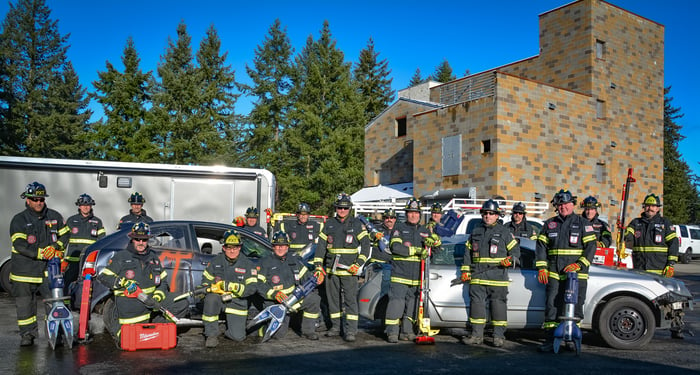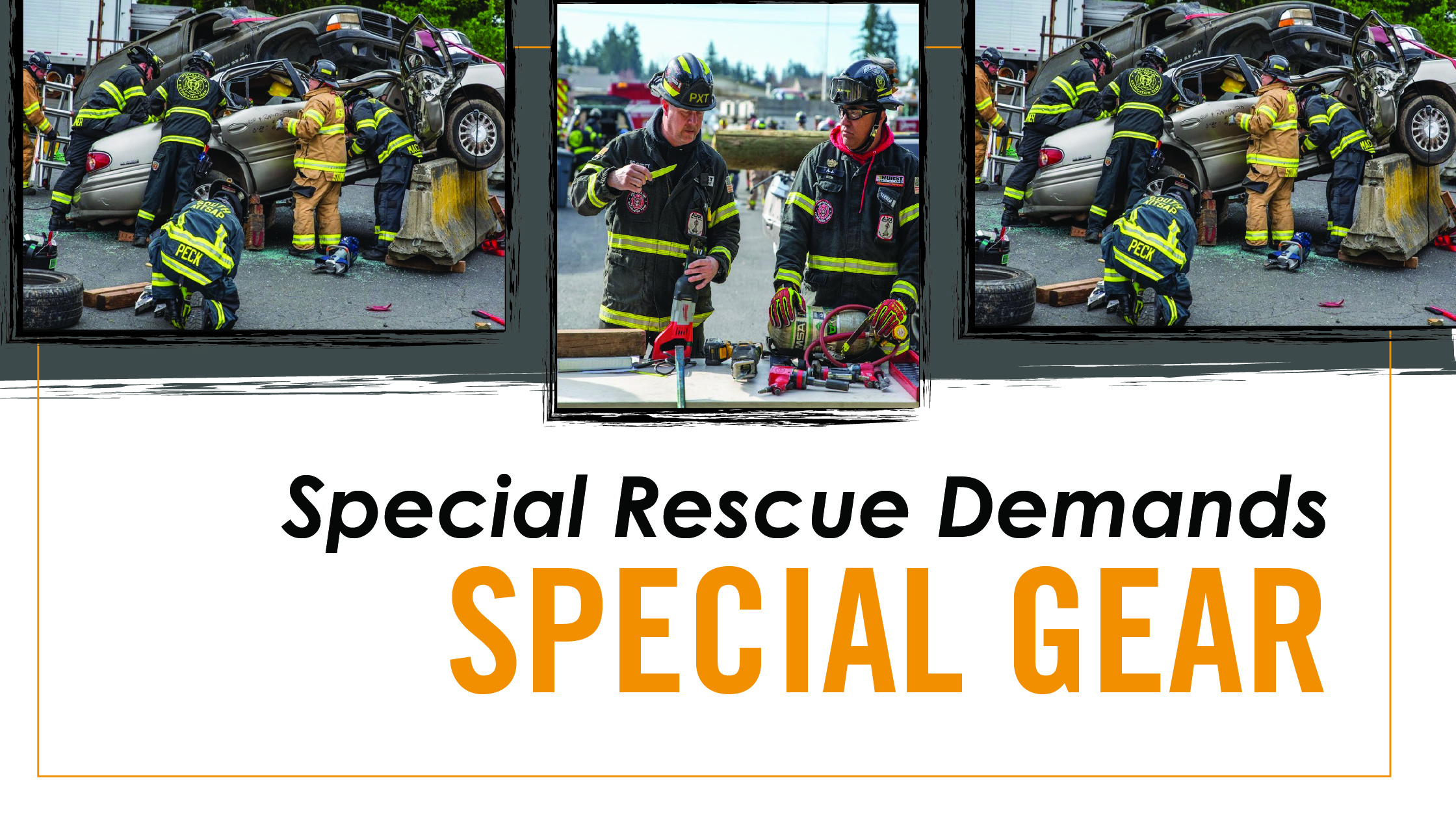Every moment counts in an emergency, and that’s why Puyallup Extrication Team counts on Fire-Dex.
Twisted metal … shattered glass … oily spills …
The dangers faced by first responders extracting people from motor vehicles involved in accidents are significant and potentially life-threatening. From the intense heat of an engine to hazardous fumes to ruptured tanks leaking gallons of fuel, first responders must take extra steps to aid crash victims while protecting their own safety. That’s where the Puyallup Extrication Team (PXT) shines by teaching firefighters special rescue skills for removing people trapped in severe automobile accidents.

It’s risky work negotiating vehicular wreckage and this team leaves nothing to chance starting with personal protective equipment (PPE). With Fire-Dex, PXT has found a better-fitting alternative to the bulky garments often worn by roadside emergency responders.
Teaching lifesaving techniques
Comprising 17 professional firefighters schooled in the latest auto extrication methods, PXT, based in Puyallup, Washington, is a nonprofit organization that has instructed thousands of rescuers from Alaska to Argentina since 2000. With a cache of equipment and stable of qualified instructors, the team travels domestically and abroad to bring quality education to firefighters where they work. Classes range from basic to advanced and cover auto extrication, technical heavy extrication and new vehicle/hybrid extrication techniques.
These interactions have a compounding effect on the way the PXT performs rescues in its own communities and its teachings. This includes PPE considerations, and for Puyallup Extrication, TECGEN51 Fatigues are the preferred choice for both work and school activities.
“I’ve been a firefighter for 34 years and most of that as an officer,” says Jeff Pugh, PXT president. “My passion is being heavily involved in special operations for my department and the county and then FEMA, and with that comes the extra rescue discipline that vehicle extrication requires.”
“We’ve had the fortune to try many types of PPE over our 23 years in extrication—helmets, gloves, eyewear, boots, fatigues. When we've made a switch it’s because it works better for us, and that’s why we wear Fire-Dex.”
Alternative gear fits most calls
For most departments, up to 90% of responses are nonstructural in nature. Single-layer garments produced with TECGEN51 fabric are a lightweight and durable alternative to wearing full bunker gear on every call. The twill-weave fabric—having a pattern of diagonal parallel ribs for sturdiness—is breathable and minimally burdening to allow for maximum comfort and mobility, but still provides the necessary flame-resistant (FR) rating protection. Moisture-wicking technology further helps keep the wearer cool and dry by rapidly moving sweat away from the skin. Crucially, the garments utilize a bi-wing back design so that as the arms move, a part of the back also moves along with generous ease.
Beyond class instruction, PXT participates nationally and internationally in North American Vehicle Rescue Association (NAVRA) and World Rescue Organisation (WRO) competitions. Teams of firefighters from around the world battle it out in these rescue scenarios to enhance their skills, learn new automotive technologies and help advance the techniques of extrication rescue.

“We had one-piece coveralls for quite some time but started seeing two-piece ensembles in the competition arena,” says Pugh. “These were lighter and more breathable than structural bunker gear, so our core temps stay down, and just the ability to move in them was a game-changer. We started researching and understanding these different companies, and that led us to Fire-Dex and to wearing their gear."
Disentangling and removing victims trapped in auto accidents exposes rescuers’ gear to any number of jagged objects, scorching-hot surfaces and harmful substances. Most structural gear provides adequate protection in these scenarios but tends to lack the freedom of movement that allows wearers to access awkward positions during the extrication process. The considerable weight and complexity of bunker gear can also be cumbersome and uncomfortable during summer months especially, which can place added physical stress on first responders and increase the risk of heat exhaustion.
Alternative garments like TECGEN51 Fatigues solve this problem by combining fabric tensile strength, thermal protection and ergonomic needs into lighter, closer fitting apparel that is certified to both NFPA 1951 (technical rescue) and NFPA 1977 (wildland rescue). Incorporated into the garments are features that allow rescuers to stay safe and respond quickly to changing conditions in an emergency including a radio pocket and flashlight holder, mic tab, reflective trim, full width collar closure and glove interface adjustments.
“Now you have a choice when that call comes in,” says Pugh. “All departments want to extend the life of their turnout gear and here you have alternative PPE that’s even better suited for most types of rescues. It also gives us an advantage in competition exercises that are timed and scored, so I couldn’t imagine a better garment for us.”
A perfect fit
The dangers faced by auto accident responders require them to be prepared for any eventuality. As PXT competes and shares knowledge with firefighters from across the world, it does so with confidence its instructors are wearing fatigues offering an improved fit and maximum protection that also incorporate the latest materials and technologies to provide optimum strength and mobility.
“We're pretty mobile in our teachings and competitions, so if you don't have the right fit it can be hard to get around,” Pugh adds. “It might be 12 hours or more we’re geared up so if the inseam is off, or you've got sagging pants, or there’s shrinkage at the elbows and sleeves, well it’s going to be a long day. My advice is to really do your homework before purchasing gear because you’re going to wear the pain of that wrong choice every day.”
“Firefighters will come to class in their full bunker gear, and I don't care how cold it is outside, we're still seeing them bust a sweat. I think a lot of them would appreciate being able to wear what we wear.”







Leave a Reply